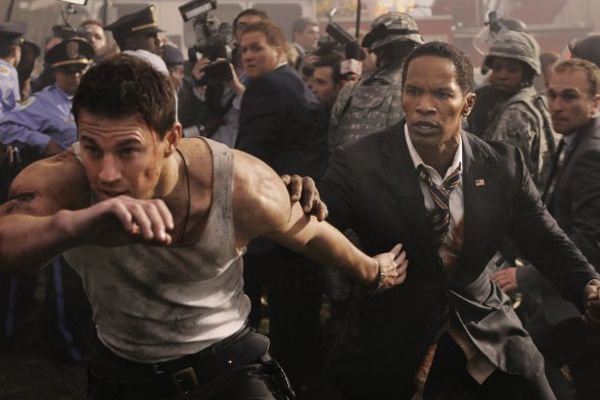'White House Down': What It Takes to Protect the President

Hollywood seems to have the ingredients needed for a blockbuster disaster movie down to a science: lots of explosions, action-packed fight sequences and nefarious criminals laying siege to the government, a city or the world.
This summer's latest action movie, "White House Down," which opens in theaters nationwide today (June 28), certainly follows the tried-and-true formula. But in reality, it takes more than special effects to protect the president; and if anyone knows what it takes to protect the White House, it's Mickey Nelson, who spent 28 years serving in the U.S. Secret Service.
Before his retirement in 2012, Nelson was the assistant director for the Secret Service's Office of Protective Operations, which manages the execution and development of policy related to the agency's protective mission. [Infographic: The History of the US Secret Service]
While "White House Down" may be the work of Hollywood screenwriters, Nelson, who was invited to an early screening, says there are elements of reality in the film.
"They recreated the East Wing, the West Wing, the Oval Office and the President's limo, and the duplications are unbelievable," Nelson told LiveScience. "Unless you knew you were watching a movie, you would think you are in the White House."
The film's plot centers around a paramilitary group that takes over the White House. A police officer at the U.S. Capitol, whose application to the Secret Service was rejected, must try to rescue the president before it's too late. The movie stars Channing Tatum, Maggie Gyllenhaal and Jamie Foxx.
Since the White House is such a visible and well-known landmark, security officials have to take that into account when establishing security protocols.
Sign up for the Live Science daily newsletter now
Get the world’s most fascinating discoveries delivered straight to your inbox.
"The Secret Service is aware that there could be an attack at the White House, but there are many, many measures in place to not only prevent that, but to respond to it if it ever happened," Nelson said.
For one, Secret Service officials take advantage of a variety of resources to ensure the safety of the president.
"We have a number of overt and covert assets in any venue with the president, or any of the people we protect," Nelson explained. "Sometimes these are very visible — uniformed officers on patrol, armored vehicles, barricades — and other things are more invisible, like some of the technical or tactical measures."
Regardless of the tools being used, when it comes to security, preparation is key, he added.
"We always want to be a step ahead, where possible," Nelson said. "We employ a variety of technologies to stay proactive, whether that's armoring a vehicle or deploying the latest magnetometers or metal detectors. We also use technology for early detection of chemical, biological, radiological or nuclear threats."
Still, while the rapid pace of technological change has helped the Secret Service hone new security strategies, it can be a double-edged sword, Nelson said.
"Just as it can be used for you, technology can also be used against you," he explained. "Technology helps us develop countermeasures, like armored vehicles, so the way that we protect the president now has obviously changed, but the main challenges have remained pretty consistent throughout history."
And despite spending nearly three decades serving in the Secret Service, Nelson is still able to sit back and enjoy the action played out on the silver screen.
"I do enjoy them," Nelson said. "There have been a number of Secret Service movies that have been made throughout the years, and I enjoy them very much. I look at them through a very different set of eyes, so I'm probably a lot more critical, but it doesn't keep me from enjoying the movies."
Follow Denise Chow on Twitter @denisechow. Follow LiveScience @livescience, Facebook & Google+. Original article on LiveScience.com.

Denise Chow was the assistant managing editor at Live Science before moving to NBC News as a science reporter, where she focuses on general science and climate change. Before joining the Live Science team in 2013, she spent two years as a staff writer for Space.com, writing about rocket launches and covering NASA's final three space shuttle missions. A Canadian transplant, Denise has a bachelor's degree from the University of Toronto, and a master's degree in journalism from New York University.











